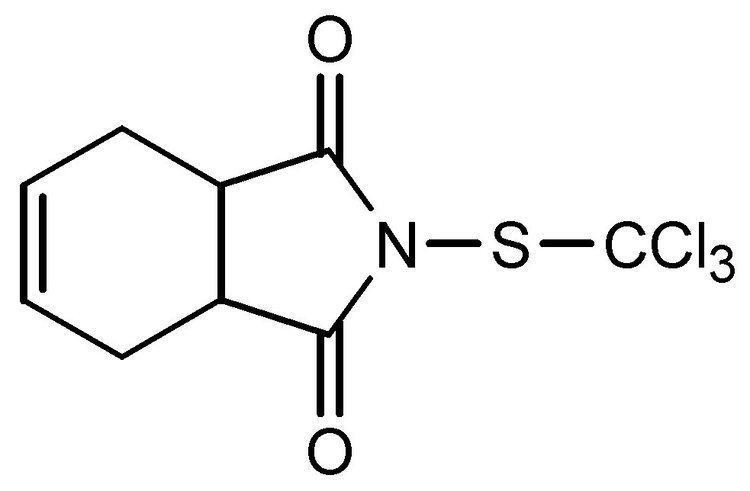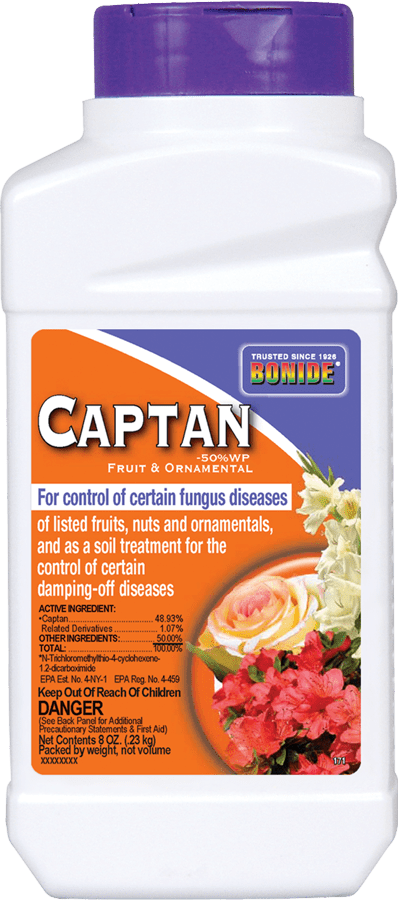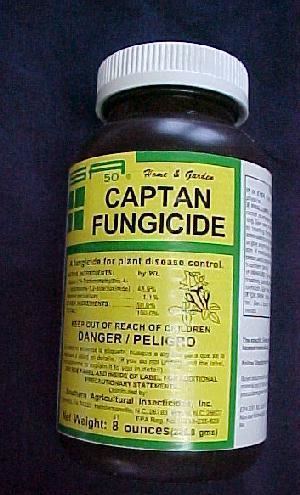Formula C9H8Cl3NO2S Melting point 178 °C | Molar mass 300.59 g/mol Density 1.74 g/cm³ | |
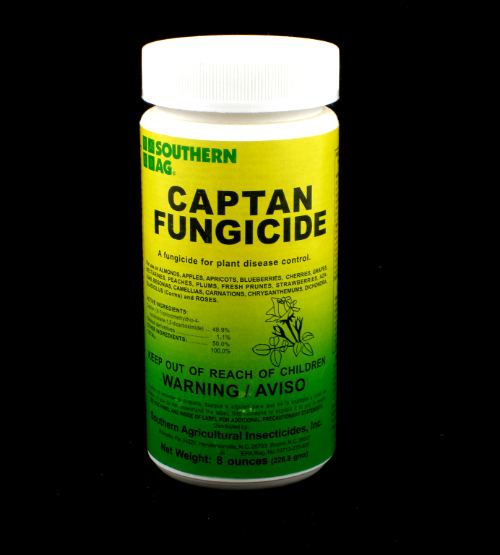 | ||
Appearance white crystalline powder (pure); yellow powder (commercial) | ||
Captan clean heart official video
Captan is the name of a general use pesticide (GUP) that belongs to the phthalimide class of fungicides. Though it can be applied on its own, Captan is often added as a component of other pesticide mixtures. It is used to control diseases on a number of fruits and vegetables as well as ornamental plants. It also improves the outward appearance of many fruits, making them brighter and healthier-looking. Captan is utilized by both home and agricultural growers and is often applied during apple production. It is also active against certain oomycetes, such as Pythium, making it useful for controlling damping off.
Contents
- Captan clean heart official video
- Captan feat dilara hislerimden z nt ler
- Potential health effects
- References
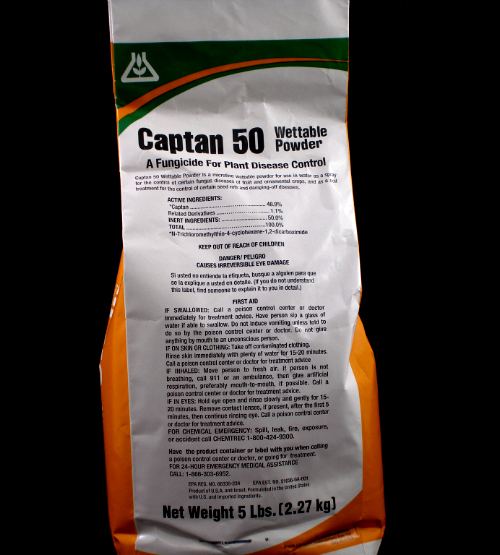
Captan feat dilara hislerimden z nt ler
Potential health effects
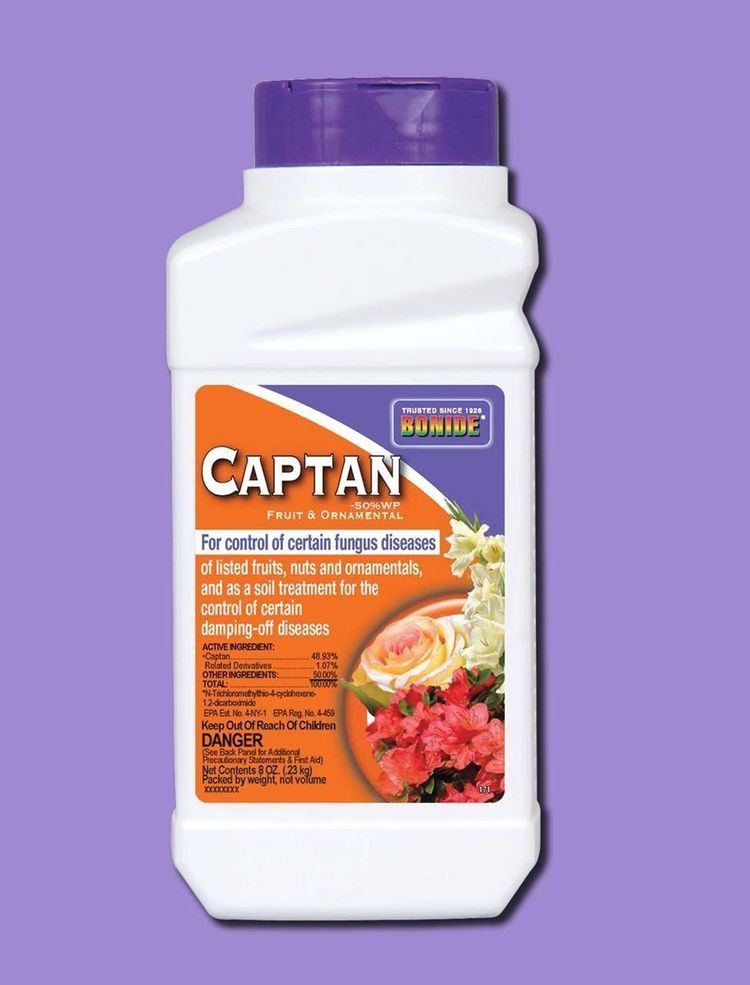
Captan was previously cited as Group B2, a probable human carcinogen by the US Environmental Protection Agency (EPA), but was reclassified in 2004. Since the mode of action has been established as a proliferative response (in mice only) after intestinal villi are disrupted, captan has been deemed not likely to cause tumors at doses that do not irritate the intestine. The EPA now states, "The new cancer classification considers captan to be a potential carcinogen at prolonged high doses that cause cytotoxicity and regenerative cell hyperplasia. These high doses of captan are many orders of magnitude above those likely to be consumed in the diet, or encountered by individuals in occupational or residential settings. Therefore, captan is not likely to be a human carcinogen nor pose cancer risks of concern when used in accordance with approved product labels. A similar reclassification has been made for folpet, captan's sister fungicide, which shares a common mechanism of toxicity. A key finding for captan (and folpet) is these fungicides are not mutagenic in vivo; that is, they are not mutagenic in the intact animal.
